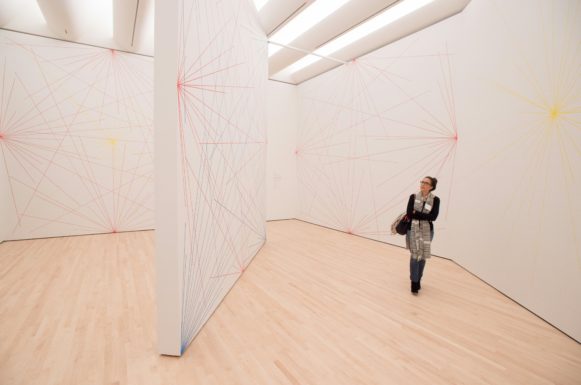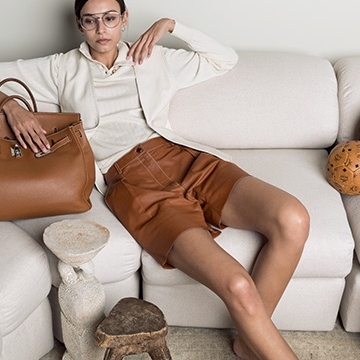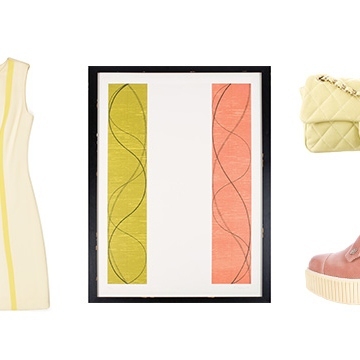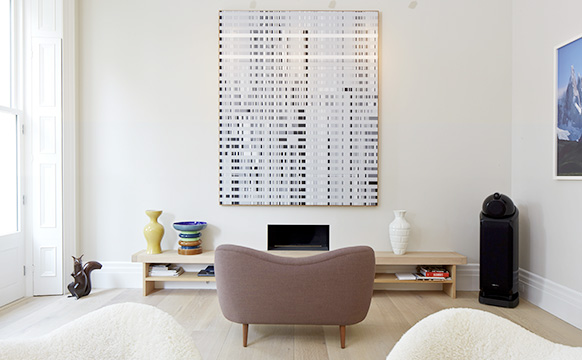
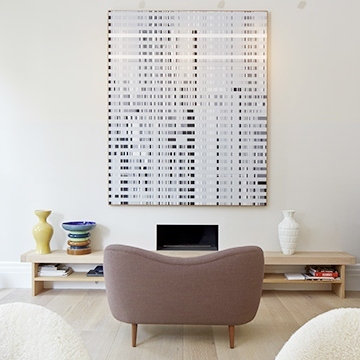
3 Statement Art Pieces Worth the Investment
While meticulously planned gallery walls have certainly had their moment, there’s nothing more impactful than a statement art piece. “It’s about enhancing your everyday life by transforming the space you’re in,” Fine Art Curator Brittany Gersh muses. “When people have statement pieces, it catalyzes conversation. The piece tells a story about you as a collector, when you bought it, why you bought it, the space it’s in.”
Large-scale pieces can provide an easy design solution in the often daunting process of interior decorating, but this one-and-done method can be simultaneously minimal and bold. A simple design done in oversize proportions can create as strong an impact as the most esoteric abstract artwork. Here, Gersh recommends three of her favorite statement art pieces to decorate your space.
1. Untitled, 1985 | Richard Serra
Richard Serra’s artwork commands attention. His site-specific sculptures are intended to interrupt everyday life. Exploring his behemoth installations — mazes of bent and curved steel walls — is like being in a vast canyon. Viewers are dwarfed by their mass and engulfed in their presence. While you may not be able to fit one of the artist’s towering installations in your office or home, you can easily incorporate one of his large-scale lithographs into your space.
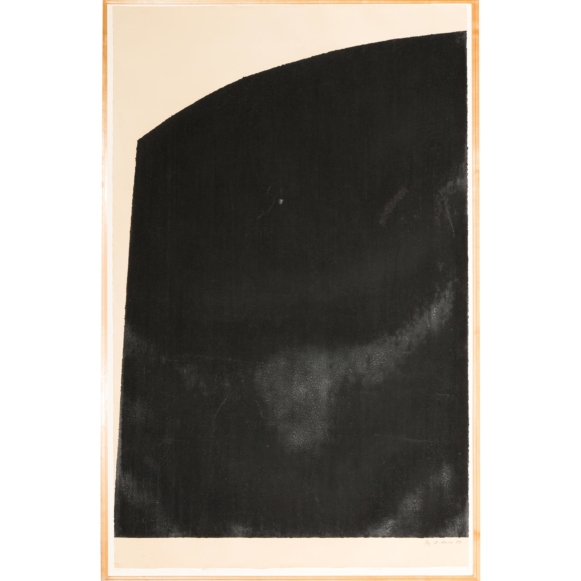
Untitled lithograph by Richard Serra, $9,000
“Richard Serra is known for these big, monolithic pieces,” says Gersh. “His work is meant to transform your space.” In this untitled lithograph, Serra worked with black paintsticks, a crayon-like implement made from oil, wax and pigment, and his method of choice when it comes to drawing. The artist applied layers and layers of black pigment onto the canvas, creating an extreme contrast to the empty portion, and giving the piece a sort of floating quality. While the two-dimensional work is less monumental than the artist’s installations, its statement is just as strong.
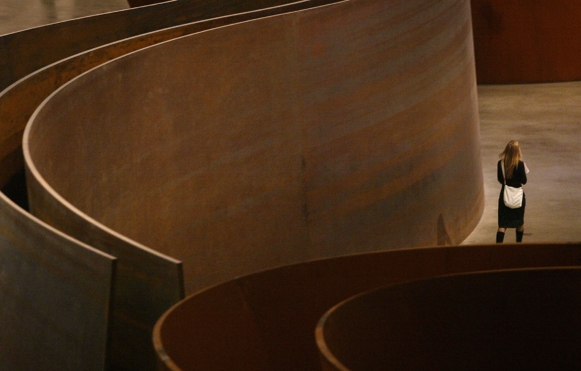
To display this type of artwork, Gersh recommends keeping the frame simple.“This piece came in a nice, minimal frame, which is perfect since you want to let the print speak for itself. The natural wood blends in with the rest of the room and doesn’t distract from the work.”
2. Knokke Polyptch V , 2006 | Massimo Vitali
Looking at a Massimo Vitali piece is like taking a mini vacation. The famed photographer conjures dreams of endless summer with his pastel-hued snapshots, capturing people in public spaces near his home in Lucca, Italy. “What I like about Vitali’s work is that there’s always these little details. You can spend hours looking at them because there’s so many vignettes going on,” says Gersh.
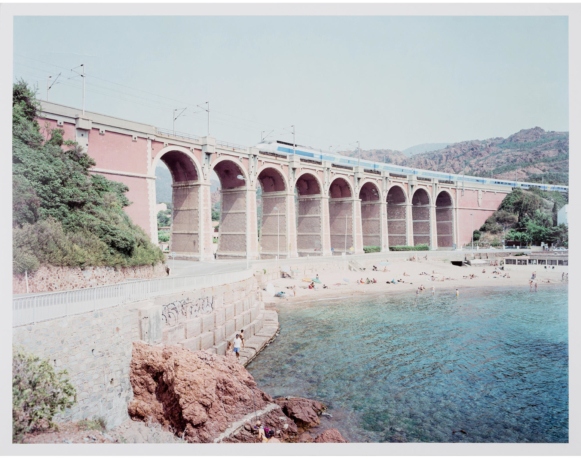
Massimo Vitali’s Knokke Polyptych V, $2,100
Usually stationed at a vantage point far removed from the subject, Vitali uses his large-format camera to capture beachgoers unguarded, giving a snapshot of genuine human nature. Vitali’s iconic images defined this type of photography — glamorous water scenes capturing lives of leisure — and influenced contemporary artists like Gray Malin, who makes references to Vitali’s work in his photographs of Los Angeles.
Though Vitali’s pieces can fetch as much as $151,000, Gersh explains, “This piece in particular is part of a portfolio that was broken up, so the price is more accessible.”
3. Wadsworth Color Band Plate 2, 2000 | Sol LeWitt
A conceptualist to the core, Sol LeWitt believed his ideas were the true works of art, and delegated the actual execution to his assistants, who built his work following his often vague instructions. His large-scale wall drawings, though seemingly simplistic, play with depth perception using isometric perspective, and change each time they’re displayed, according to the builders’ interpretation of LeWitt’s instructions.
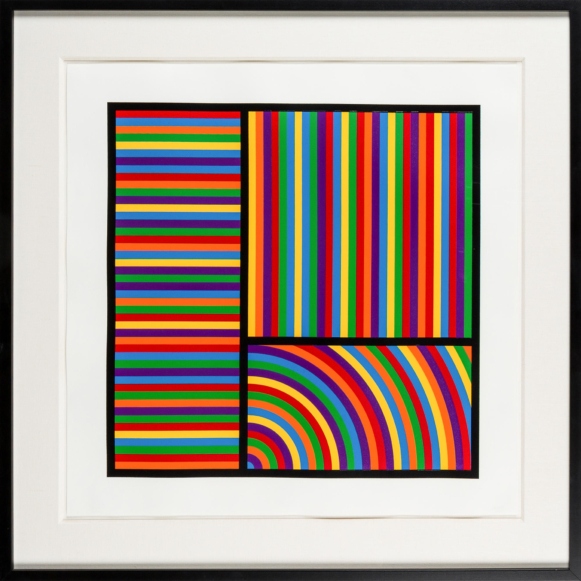
Sol LeWitt’s Wadsworth Color Band 2, $2,000
Though the artist is more widely known for his large-scale structures and wall drawings, prints remain an important part of his repertoire. “This piece is smaller in scale, but it’s still really iconic to LeWitt. The market for his work is very strong so it’s a great investment,” says Gersh.
For this piece, LeWitt used the linocut technique of printmaking, a favorite method of Pablo Picasso and Henri Matisse, wherein the artist chisels a piece of linoleum and applies ink with a brayer. Though dismissed by other artists as an amateur technique, the linocut demonstrates LeWitt’s desire to make art democratic and accessible.
